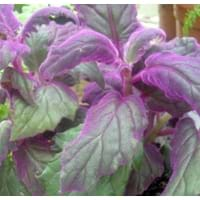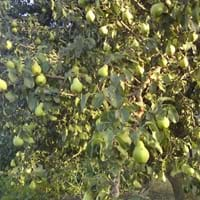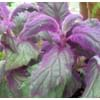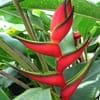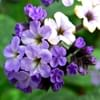Life Span
Annual, biennial or perennial
Perennial
Type
Tender Perennial
Perennial
Origin
Melanesia
Hybrid origin
Types
Herbaceous perennial
Not Available
Habitat
Sunny Edge
Hedge, hedge rows, Woodland edges
USDA Hardiness Zone
10-12
4-9
Sunset Zone
H1, H2
Not Available
Habit
Prostrate/Trailing
Upright/Erect
Flower Color
White, Orange, Orange Red
White
Flower Color Modifier
Bicolor
Not Available
Fruit Color
Brown
Light Red, Orange, Yellow
Leaf Color in Spring
Green, Purple, Dark Green
Green
Leaf Color in Summer
Green, Purple, Dark Green
Green
Leaf Color in Fall
Green, Purple, Dark Green
Green
Leaf Color in Winter
Light Green
Light Green
Leaf Shape
Elliptic
Elliptic
Plant Season
Spring, Summer, Fall, Winter
Spring, Summer
Sunlight
Partial Sun, Partial shade
Full Sun, Partial Sun
Growth Rate
Medium
Medium
Type of Soil
Loam
Loam, Sand
The pH of Soil
Neutral
Acidic, Neutral
Soil Drainage
Well drained
Well drained
Bloom Time
Spring, Late Spring, Early Summer, Summer
Spring
Repeat Bloomer
No
Not Available
Tolerances
Drought
Drought
Where to Plant?
Ground, Pot
Ground
How to Plant?
Stem Cutting
Seedlings
Plant Maintenance
Medium
Medium
Watering Requirements
Medium
Average Water Needs, Do not water frequently
In Summer
Lots of watering
Lots of watering
In Spring
Moderate
Moderate
In Winter
Average Water
Average Water
Soil pH
Neutral
Acidic, Neutral
Soil Type
Loam
Loam, Sand
Soil Drainage Capacity
Well drained
Well drained
Sun Exposure
Partial Sun, Partial shade
Full Sun, Partial Sun
Pruning
Remove damaged leaves, Remove dead branches, Remove dead leaves
Remove damaged leaves, Remove dead branches, Remove dead leaves
Fertilizers
All-Purpose Liquid Fertilizer
All-Purpose Liquid Fertilizer
Pests and Diseases
Red blotch
Red blotch
Plant Tolerance
Drought
Drought
Flowers
Insignificant
Showy
Flower Petal Number
Single
Single
Foliage Texture
Medium
Medium
Foliage Sheen
Matte
Glossy
Attracts
Not Available
Not Available
Allergy
Not Available
Not Available
Aesthetic Uses
Hanging Basket
Not Used For Aesthetic Purpose
Beauty Benefits
Not Available
Not Available
Environmental Uses
Air purification
Air purification
Medicinal Uses
Not Available
Astringent, Febrifuge
Part of Plant Used
Leaves
Flowers, Stem
Other Uses
Used as Ornamental plant
Planted in shelterbeds, Used for woodware
Used As Indoor Plant
Yes
No
Used As Outdoor Plant
Yes
Yes
Garden Design
Container, Hanging Basket, Houseplant, Mixed Border, Tropical
Edible, Fruit / Fruit Tree
Botanical Name
GYNURA aurantiaca
PYRUS 'Ayers'
Common Name
Purple Velvet Plant
Ayers Pear, Pear
In Hindi
gynura aurantiaca
Ayers Pear
In German
aurantiaca Gynura
Ayers Birne
In French
aurantiaca Gynura
Ayers Poire
In Spanish
aurantiaca gynura
Ayers pera
In Greek
Gynura aurantiaca
Ayers Pear
In Portuguese
Gynura aurantiaca
Ayers Pear
In Polish
Gynura aurantiaca
Ayers Gruszka
In Latin
Gynura aurantiaca
Ayro Orbis
Phylum
Magnoliophyta
Tracheophyta
Class
Magnoliopsida
Magnoliopsida
Family
Asteraceae
Rosaceae
Clade
Angiosperms, Asterids, Eudicots
Angiosperms, Eudicots, Rosids
Tribe
Senecioneae
Not Available
Subfamily
Not Available
Not Available
Number of Species
Not Available
Properties of Purple Velvet Plant and Ayers Pear
Wondering what are the properties of Purple Velvet Plant and Ayers Pear? We provide you with everything About Purple Velvet Plant and Ayers Pear. Purple Velvet Plant doesn't have thorns and Ayers Pear doesn't have thorns. Also Purple Velvet Plant does not have fragrant flowers. Purple Velvet Plant has allergic reactions like Not Available and Ayers Pear has allergic reactions like Not Available. Compare all the properties and characteristics of these two plants. Find out which of these plant can be used as indoor plant. If you are interested to decorate your house and garden, find out aesthetic uses, compare them and select the plant which will beautify your surrounding. Along with beautification, try comparing medicinal and edible uses of Purple Velvet Plant and Ayers Pear and you can choose the plant having best and most benefits.
Season and Care of Purple Velvet Plant and Ayers Pear
Season and care of Purple Velvet Plant and Ayers Pear is important to know. While considering everything about Purple Velvet Plant and Ayers Pear Care, growing season is an essential factor. Purple Velvet Plant season is Spring, Summer, Fall and Winter and Ayers Pear season is Spring, Summer, Fall and Winter. The type of soil for Purple Velvet Plant is Loam and for Ayers Pear is Loam, Sand while the PH of soil for Purple Velvet Plant is Neutral and for Ayers Pear is Acidic, Neutral.
Purple Velvet Plant and Ayers Pear Physical Information
Purple Velvet Plant and Ayers Pear physical information is very important for comparison. Purple Velvet Plant height is 30.00 cm and width 90.00 cm whereas Ayers Pear height is 300.00 cm and width 300.00 cm. The color specification of Purple Velvet Plant and Ayers Pear are as follows:
Purple Velvet Plant flower color: White, Orange and Orange Red
Purple Velvet Plant leaf color: Green, Purple and Dark Green
Ayers Pear flower color: White
- Ayers Pear leaf color: Green
Care of Purple Velvet Plant and Ayers Pear
Care of Purple Velvet Plant and Ayers Pear include pruning, fertilizers, watering etc. Purple Velvet Plant pruning is done Remove damaged leaves, Remove dead branches and Remove dead leaves and Ayers Pear pruning is done Remove damaged leaves, Remove dead branches and Remove dead leaves. In summer Purple Velvet Plant needs Lots of watering and in winter, it needs Average Water. Whereas, in summer Ayers Pear needs Lots of watering and in winter, it needs Average Water.
